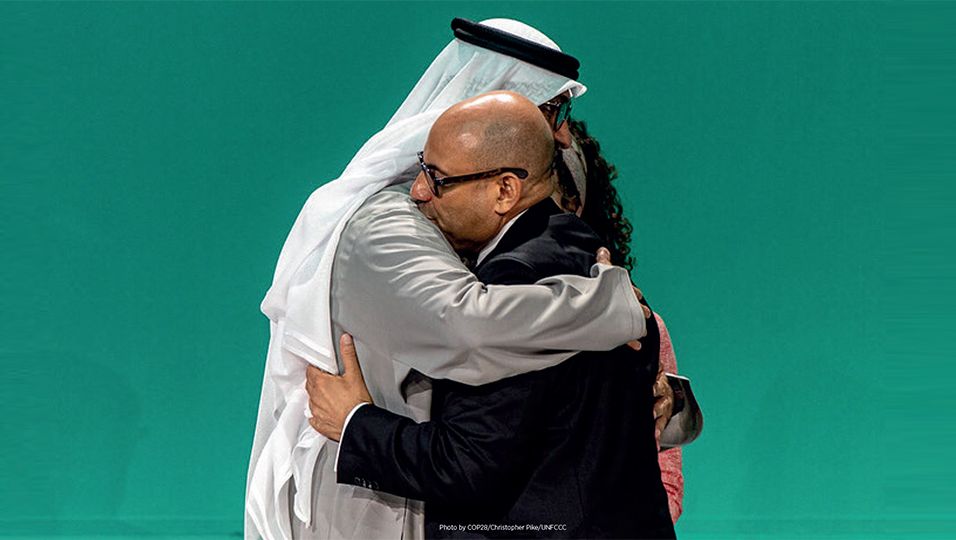Nine months after Sharm-El-Sheikh, tangible progress is unclear. COP26, held in Glasgow in November 2021, embedded the need to include emerging markets in the transition to net zero. This was manifest in the announcement of a “deal” between South Africa and four “donor” countries to work together on a Just Energy Transition Partnership (JETP) to raise a total of US$8.5bn in climate financing to accelerate that country’s energy transition. It was not in reality a deal, but a goodwill commitment. COP26 also emphasised the importance of nature, methane emissions and adaptation finance.
If COP26 focused on the big macro issues, COP27 attempted to get more specific. It also gave emerging markets a voice. Though most of us in the private finance sector only discovered COP in Glasgow, we developed greater expectations and pitched up in size in Sharm. Greater representation from Africa was evident – this was “the Africa COP” after all.
There, at COP27, the JETP spawned offspring with similar ambitions being announced for Indonesia, Vietnam and, in a somewhat different guise, Egypt. While the South Africa JETP was a hodge-podge of bilateral discussions between the relevant governments, the subsequent JETPs were to be private sector led. Or, at least, private sector coordinated.
The buzzwords of COP27 were blended finance, loss and damage, and the private sector. We expect all these themes to figure prominently at COP28, which, we anticipate, will attempt to be about execution. To date, results have been mixed.
The private sector role in leading the implementation of the energy transition is a key focus area of the UAE COP28 presidency. Progress has already been made by the COP28 Presidency with the recent $4.5bn announcement at Africa Climate Week – four UAE institutions pledging to finance 15GW of clean power by 2030 in partnership with Africa50.
Blended finance
We will continue to talk about blended finance – without a whole lot more progress. This is mainly due to the absence of loss-mitigation capital. It is impossible to blend without this. All credit to the UK government for its recent announcement of a US$2bn replenishment to the Green Climate Fund (GCF). This is a major boost to a fund that currently has US$12.8bn committed to projects.
While the GCF performs a critical role, it is not the answer to closing the funding gap in emerging markets. The GCF is increasingly focused on channeling capital into areas where there is none – not where there is an insufficient amount. As a result, to access its capital, any projects or funds must operate in very difficult jurisdictions or be doing very difficult projects.
This will not do much to introduce the big pool of developed market asset owners to climate investment in emerging markets. It also won’t make much of a dent in the annual funding gap for the EM energy transition, which the IEA estimates will be US$850bn per annum by 2030.
In a rising global interest rate environment – quite unfriendly to emerging markets – it would be transformative for MDBs and/or DFIs to provide first-loss capital to catalyse DM investors into emerging markets.
While this is not necessary to enhance risk-adjusted returns in middle income countries in the long term, most developed-market asset owners are unfamiliar with EM corporate debt and project finance debt, which will provide the bulk of the financing for the energy transition globally. It would be easier for asset owners and their consultants to take that leap now – when the planet cannot afford for us to wait. Catalysing this investment would help narrow the gap between perceived risks and realised risks in the short term, thus spurring the vital growth of the emerging market transition asset class over the medium term.
My best hope for COP28 is that we see the UAE lead in establishing a series of funding initiatives where the country will partner with private institutional savers from around the world to spur climate financing for projects that have clear revenue streams behind them. The $4.5bn is an excellent start, but more needs to happen.
Expectations
So, in gauging what we expect of COP28, I am left with three classification buckets.
In the aspiration bucket, I include private sector led financing for the EM energy transition, a large second close for the GCF, and some progress on the loss and damage Fund.
In the speculation bucket, there remains no progress on any of the JETPs and the reform of the MDBs is still very much a work in progress.
In the hesitation bucket, national determined contributions will remain inadequate – from developed and emerging markets.
In an era of global political dysfunctionality, then, it is currently for the private sector and a determined UAE COP28 presidency to eke out the wins. In adapting to changing realities, we do not abandon our expectations. We refine them.









